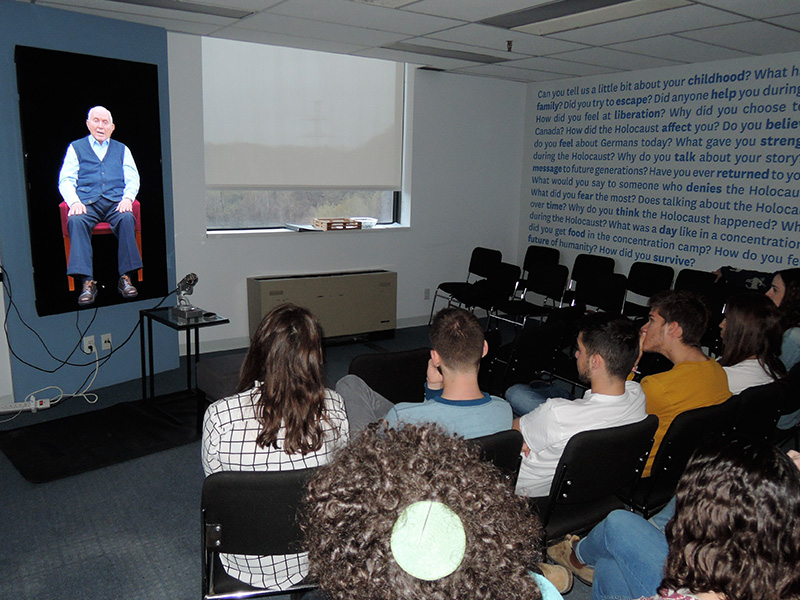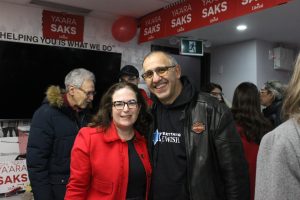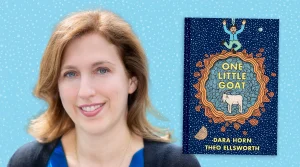Pinchas Gutter sits comfortably in a chair, his hands resting in his lap, and answers questions about his Holocaust experience with ease.
His young interlocutors nod, cradle their chins and think of more queries.
But this is no ordinary Q&A session between a survivor and young people. Gutter is not actually there, though the 85-year-old may as well be.
The Toronto survivor of the Warsaw Ghetto and the Majdanek and Buchenwald concentration camps is the world’s first subject to deliver his memories and lessons for the future via New Dimensions in Testimony (NDT), cutting-edge technology that promises to revolutionize how new generations will interact with Holocaust survivors.
Incorporating advanced filming techniques, specialized display know-how and state-of-the art voice recognition, NDT is the latest step in not only preserving survivors’ memories, but in presenting them in a way that goes beyond mere audio and video.
Though Gutter does appear on a screen, his image is vivid, almost life-like. More impressive is when he answers random questions from a live audience, spoken into a microphone, as seamlessly as though he was there. It’s an interactive conversation, complete with body language.
A project of the Los Angeles-based USC Shoah Foundation, which has video-recorded the testimonies of some 54,000 Holocaust survivors worldwide, the NDT initiative has, to date, filmed a dozen survivors.
READ: WHY WE NEED TO STOP ‘RECREATING’ THE HOLOCAUST
Like Gutter, they spent about a week in a special studio in Los Angeles before 50 cameras arranged in a rig to capture a three-dimensional feel. Some 1,500 questions were asked to ensure an answer to almost any inquiry.
Typical questions might be, “How did you survive?” “What gave you strength?” and “What happened to your family?” Key words elicit responses, which are instantaneous.
“Words such as ‘hologram’ and ‘avatar’ fail to accurately describe New Dimensions in Testimony,” states a USC press release. What sets it apart “is the ability to engage conversationally with the survivor by asking questions that trigger relevant, spoken responses.”
The project, open to the public, is housed in the Lipa Green Centre, in a room down the hall from the Sarah and Chaim Neuberger Holocaust Education Centre. It’s the first Canadian site to receive NDT and only the third in the world.
The CJN was invited to witness a session between Gutter and 24 shinshinim, young Israelis who are spending a gap year between high school and military service as volunteers in Toronto’s Jewish community.
For Gutter, and others since recorded, “you can imagine this was not an easy experience,” Michelle Fishman, education co-ordinator at the Holocaust centre, told the young Israelis.
But their questions are lively and blunt: “How do you feel about Israel?” “Did you ever return to Poland?” and “What would you say to a Holocaust denier?” Gutter answers each one, with varying complexity.
And to the query, “Where was God during the Holocaust?” he replies with another question: “Where was man?”
It’s still considered a pilot project, so the occasional glitch is noted and used to fine-tune the delivery in the future.







